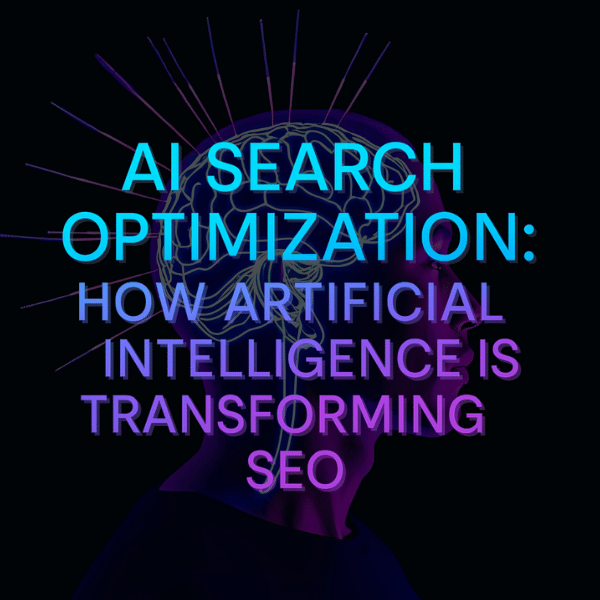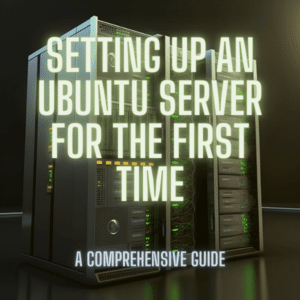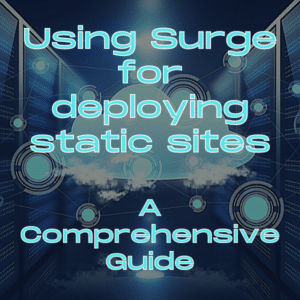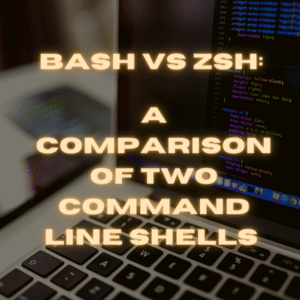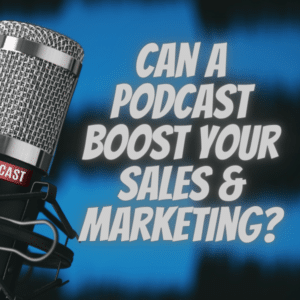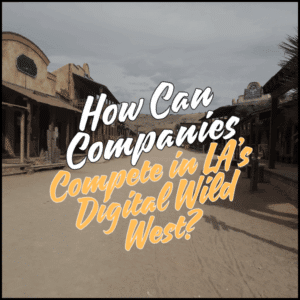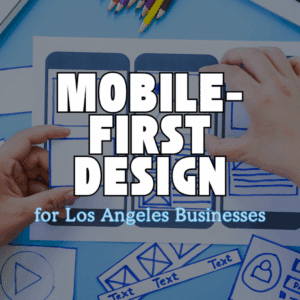Why you can trust Sunlight Media
- Expertise and Experience:Our content is crafted by seasoned professionals with extensive experience in digital marketing, ensuring you receive accurate and actionable advice.
- Unbiased Information:We provide impartial insights and recommendations based solely on what's best for your business, without any hidden agendas or promotions.
- Thorough Research:Our articles are backed by comprehensive research and the latest industry trends, ensuring you stay informed with reliable and up-to-date information.
- Transparency and Honesty:We believe in complete transparency. We disclose our sources, methodologies, and any potential conflicts of interest, so you can trust the integrity of our content.
- Continuous Improvement:We constantly review and update our content to reflect the latest developments in digital marketing, so you always have access to the most current and relevant information.

Artificial intelligence is reshaping how businesses approach search visibility and optimization. Traditional search engines like Google and Bing are being complemented—and in some cases challenged—by AI-powered search tools that deliver results through natural language processing and personalized recommendations. For companies and marketers, this shift means rethinking SEO strategies to align with new technologies like AI-driven algorithms, generative engine optimization, and conversational search. By understanding these changes and leveraging AI-powered tools, businesses can stay visible, attract relevant traffic, and maintain authority in an evolving digital landscape.
AI Search Optimization

AI Search Optimization is emerging as a critical focus for businesses that want to stay competitive in the digital space. Unlike traditional methods that rely heavily on manual keyword targeting and link building, AI-driven optimization uses machine learning algorithms and natural language processing to understand user intent, search trends, and context at a much deeper level. This allows websites to align their content more closely with what users are asking and how AI systems interpret those queries. The result is improved search visibility across AI engines, generative platforms, and search engine results pages where AI overviews now dominate
Understanding the shift from traditional SEO to AI-driven strategies
Understanding the shift from traditional SEO to AI-driven strategies starts with recognizing that search behavior is no longer limited to static keyword queries. Users now ask conversational, natural language questions, and AI engines provide direct, personalized answers. This evolution requires businesses to move beyond keyword stuffing and focus instead on structured data, semantic content, and user-first approaches. By combining proven SEO practices with AI-powered tools, site owners can adapt to new search algorithms, gain valuable insights into user behavior, and create content that ranks well in both traditional and AI-driven search results.
Search Engines in the AI Era
Search engines in the AI era have evolved beyond simply crawling and indexing websites. Traditional search engines relied on algorithms that ranked pages based on keywords, backlinks, and technical factors. While effective, these methods often produced results that were less tailored to user intent. In contrast, AI-powered search engines analyze queries through natural language processing, semantic understanding, and machine learning to deliver more precise, context-aware results. This shift prioritizes helpful, people-first content that directly addresses the user’s needs rather than just matching keywords
How AI search engines differ from traditional search engines
How AI search engines differ from traditional search engines lies in their ability to interpret meaning instead of relying solely on literal matches. For example, when users ask conversational or complex questions, AI engines can provide summarized answers, context-driven insights, and personalized results. Features like Google’s AI Overviews illustrate this change by synthesizing information from multiple sources into a single, clear response. Traditional search engines show a list of links, but AI-driven platforms aim to deliver direct answers. This evolution challenges businesses to optimize content not only for rankings but also for inclusion in AI-generated responses.
Search Engine Optimization (SEO)

Search Engine Optimization (SEO) has long been the backbone of digital visibility, helping businesses appear prominently on search engine results pages (SERPs). Traditional SEO centered on keyword placement, link building, and technical factors like site speed and mobile responsiveness. While these elements remain important, the rise of AI-powered search platforms has introduced new dimensions to the optimization process. Today, SEO is less about satisfying rigid algorithms and more about creating content that aligns with user intent, delivers helpful answers, and demonstrates authority under Google’s E-E-A-T guidelines.
Adapting core SEO practices for AI-powered platforms
Adapting core SEO practices for AI-powered platforms requires embracing both old and new strategies. On-page optimization still matters, but it must be enhanced with structured data, semantic analysis, and natural language targeting so AI engines can better interpret context. Businesses need to optimize content for conversational queries, voice search, and generative engines that summarize information directly for users. AI-powered tools can assist by analyzing massive datasets, suggesting high-value keywords, and identifying content gaps. Ultimately, success in the AI era depends on blending traditional SEO fundamentals with AI-driven insights to deliver content that is visible, credible, and useful across both classic and AI-enhanced search results.
AI Search Results
AI search results are changing the way people discover information online. Instead of displaying a simple list of blue links, AI-driven platforms like Google’s AI Overviews, Perplexity.ai, and Microsoft’s Copilot synthesize information into direct, conversational answers. For example, if a user searches “best yoga studios in Los Angeles,” Google’s AI Overview may highlight three studios, summarize reviews, and provide contact details—often without requiring the user to click through to a website. Similarly, Perplexity.ai pulls in structured answers with source links, prioritizing clarity and context. This new format delivers fast, concise results but reduces the number of clicks flowing directly to business websites.
The impact of AI-driven results on website visibility
The impact of AI-driven results on website visibility is significant. While traditional SEO focused on ranking high in SERPs, businesses must now compete for placement within AI-generated summaries. If your content is not optimized for natural language queries, structured data, or authority signals like backlinks, it risks being excluded from these AI-powered answers. On the flip side, businesses that align their SEO strategies with AI algorithms can secure valuable visibility. Appearing as a cited source in Google’s AI Overview or an answer engine summary not only builds authority but also drives highly qualified traffic, as users perceive these featured citations as trustworthy and relevant.
Generative Engine Optimization (GEO)

Generative Engine Optimization (GEO) is an emerging branch of SEO that focuses on making content visible and relevant within generative AI platforms and answer engines. Unlike traditional search engines, which list multiple links for users to explore, generative engines such as ChatGPT, Gemini, and Perplexity.ai provide direct, synthesized answers drawn from multiple sources. This creates both a challenge and an opportunity for businesses: the challenge is reduced visibility through standard listings, but the opportunity lies in being cited as a trusted source in these AI-driven responses.
Optimizing for generative AI platforms and answer engines
Optimizing for generative AI platforms and answer engines requires a strategic shift. Content must be clear, structured, and semantically rich, making it easy for AI models to interpret and summarize. Using schema markup, structured data, and long-tail conversational keywords helps AI engines understand context and intent. Establishing authority through backlinks, credible sources, and user-generated content further boosts the chances of being referenced. GEO also means producing “helpful content” aligned with Google’s E-E-A-T standards so that AI platforms recognize the expertise and trustworthiness of the source. Businesses that adapt early to GEO can stay ahead of competitors, ensuring their content is surfaced in AI-generated answers that users increasingly rely on.
AI SEO Strategies
AI SEO strategies combine traditional optimization methods with advanced AI capabilities to boost rankings, enhance user engagement, and improve overall content performance. While core practices like keyword targeting, technical SEO, and link building remain important, AI introduces new efficiencies and insights that traditional methods cannot match. AI-powered tools can analyze massive datasets at scale, identify content gaps, predict emerging search trends, and evaluate competitor strategies with unmatched speed. This allows businesses to make data-driven decisions that directly impact their search visibility and authority, and underscores how AI could revolutionize SEO and reshape the future of online search and content creation.
Leveraging AI tools to improve rankings and content performance
Leveraging AI tools to improve rankings and content performance starts with keyword research. AI-driven platforms use natural language processing and machine learning to uncover high-value, intent-based keywords that might otherwise be overlooked. These tools can also suggest semantic variations, helping create richer, more comprehensive content. Beyond keywords, AI can guide content optimization by recommending structure, readability improvements, and relevant internal links. For performance tracking, AI algorithms provide real-time insights into rankings, user behavior, and conversion patterns, allowing marketers to refine their strategies continuously. By combining human creativity with AI-powered precision, businesses can produce content that not only ranks higher but also meets the evolving expectations of AI-driven search engines.
AI-Powered SEO Tools

AI-powered SEO tools are transforming how businesses approach optimization by automating time-consuming tasks and delivering actionable insights. Instead of relying solely on manual processes, marketers can now use AI-driven platforms to streamline keyword research, analyze competitors, optimize content, and even monitor link-building opportunities. Popular tools like Surfer SEO, Clearscope, Jasper, and SEMrush’s AI features allow businesses to generate topic ideas, identify ranking opportunities, and enhance on-page SEO with greater efficiency and accuracy. These tools not only save time but also enable marketers to focus on strategy and creativity while AI handles data-heavy processes.
Automation of keyword research, link building, and on-page optimization
Automation of keyword research, link building, and on-page optimization is where AI truly excels. For keyword research, AI tools analyze vast amounts of search data, uncovering intent-based keywords and long-tail variations that traditional tools might miss. In link building, AI can evaluate the authority and relevance of potential backlink sources, helping marketers prioritize high-value opportunities. For on-page optimization, AI algorithms suggest improvements such as keyword placement, meta descriptions, structured data, and content readability adjustments. This automation empowers site owners to stay competitive, adapt to evolving algorithms, and ensure that their content meets both user needs and AI-driven ranking factors.
Content Optimization with AI
Content optimization with AI goes beyond traditional SEO methods by focusing on how search engines and users interpret meaning, context, and relevance. Instead of just placing keywords on a page, AI-driven tools analyze the semantic structure of content to ensure it provides depth and clarity. This helps align articles and web pages with the way AI search engines process natural language queries. AI also improves personalization by tailoring recommendations and content experiences based on user behavior, preferences, and past interactions. When implemented effectively, AI content optimization enhances both search visibility and user engagement.
Using AI for semantic analysis, personalization, and keyword targeting
Using AI for semantic analysis, personalization, and keyword targeting gives businesses a competitive advantage. Semantic analysis allows AI to identify related terms, synonyms, and contextual phrases, enriching content with natural variations that improve rankings. Personalization engines powered by AI can recommend articles, products, or services that align with individual user needs, creating a more engaging experience. For keyword targeting, AI analyzes massive datasets to uncover intent-driven keywords and suggests the best ways to integrate them into headings, body text, and metadata. By combining these capabilities, businesses can ensure their content resonates with both users and AI-driven search engines, resulting in higher visibility and more relevant traffic.
Traditional SEO vs AI SEO
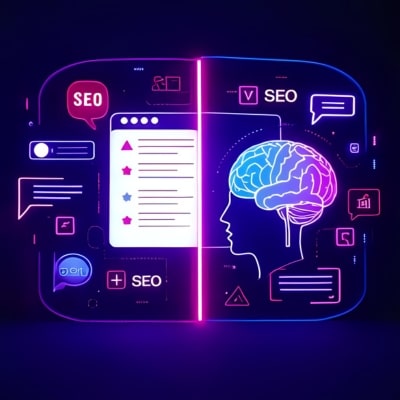
Traditional SEO vs AI SEO highlights the difference between long-standing optimization practices and the newer, AI-driven techniques shaping the future of search. Traditional SEO focuses on proven strategies like keyword placement, backlink building, and technical elements such as site speed, mobile optimization, and crawlability. These remain essential foundations for visibility in search engine results. However, AI SEO introduces additional layers of intelligence, leveraging algorithms that analyze user intent, semantics, and search behavior in real time. Together, these approaches form a hybrid model where both fundamentals and innovation play vital roles.
Balancing proven strategies with emerging AI-powered techniques
Balancing proven strategies with emerging AI-powered techniques requires an integrated mindset. For example, traditional SEO still ensures that content is technically sound and discoverable, while AI SEO can enhance it by automating keyword research, predicting search trends, and optimizing for natural language queries. Human expertise remains critical in crafting meaningful, people-first content that satisfies Google’s E-E-A-T guidelines, but AI provides efficiency and insights at scale. Businesses that combine these strengths—reliable traditional SEO practices with advanced AI-powered methods—will be better positioned to stay competitive in search rankings, achieve long-term visibility, and adapt as search engines continue evolving.
Personalized Search Results
Personalized search results are one of the most significant changes brought by AI in the search landscape. Instead of showing the same results to every user, AI-powered engines analyze individual behavior, preferences, and context to deliver tailored answers. Factors such as browsing history, location, search intent, and even device type influence the results shown. This personalization ensures that users receive more relevant, helpful, and timely content. For example, if two users search for “best restaurants near me,” one may see vegan options based on past searches while another may see family-style dining, all powered by AI-driven personalization.
How AI algorithms enhance user experience and search relevance
How AI algorithms enhance user experience and search relevance comes down to their ability to interpret patterns in user behavior. AI systems use machine learning and natural language processing to identify what matters most to each individual. By predicting needs and providing content that aligns with intent, AI reduces search friction and improves satisfaction. Businesses that optimize their content with personalization in mind—using structured data, semantic keywords, and AI-driven recommendations—can build stronger connections with their audiences. This not only increases visibility in AI-driven search results but also boosts engagement, loyalty, and conversions over time.
Optimizing Your Business for AI-Driven Search

AI-powered search tools (Google’s AI Overviews, Microsoft Copilot, Perplexity AI) change how users find answers. Use clear language, short sentences, and structured layouts. Build pages that are easy for people and machines to read. The steps below apply to local services, e-commerce, and SaaS.
1. Understand How AI Search Works
Key differences from traditional search
- AI tools assemble direct answers, not only lists of links.
- Each platform favors different sources (structured pages, reviews, forums, guides).
- Content that is clear, scannable, and factual is easier to cite.
Practical takeaways
- Use Q&A sections, bullet lists, and concise facts.
- Organize pages with descriptive H2/H3 headings.
- Add schema so machines can parse your content.
2. Optimize for Google’s AI Overviews
People-first content and page structure
- Answer the main question in the first paragraph.
- Use H2/H3 headings phrased as questions when helpful.
- Add bullet steps, pros/cons, and quick facts.
Structured data and E-E-A-T
- Implement FAQ Page, How To, Product, Service, Local Business schema where relevant.
- Match schema to visible on-page content.
- Show author bios, credentials, and references.
Experience, speed, and freshness
- Improve Core Web Vitals, mobile layout, and navigation.
- Update time-sensitive facts and pricing on a schedule.
- Keep Google Business Profile accurate (hours, photos, services).
3. Optimize for Microsoft Copilot (Bing Chat)
Bing fundamentals
- Use Bing Webmaster Tools to submit sitemaps and fix crawl issues.
- Ensure HTTPS, fast load, and mobile-friendly pages.
Conversational Q&A and schema
- Create FAQ blocks that mirror natural questions.
- Mark up pages with Local Business/Service/FAQ Page schema.
Authority and local signals
- Earn links and citations on reputable sites.
- Keep NAP data consistent across your site and directories.
- Maintain Bing Places and GBP for “near me” queries.
4. Optimize for Perplexity AI
Source types Perplexity uses
- Authoritative listicles and expert reviews.
- Useful long-form guides with clear sections and facts.
- Relevant forum discussions and Q&A threads.
Tactics to increase mentions
- Get included in “Best/Top” roundups in your niche.
- Encourage reviews on trusted platforms.
- Add Local Business, Service, and FAQ Page schema.
- Keep pages fresh with current data and specs.
5. Use Tools and AI to Refine Content
Recommended tool stack
- Surfer SEO: Topic discovery, on-page audits, content outlines.
- Clearscope: Semantic recommendations and content scoring.
- Jasper (AI writer): Drafts, outlines, and rephrasing in a clear tone.
- Ahrefs/SEMrush: Keyword and competitor insights.
- Google Trends/AnswerThePublic: Voice-style questions and rising topics.
Workflow tips
- Use AI to propose headings and FAQs, then fact-check and refine.
- Audit published pages monthly and implement suggested fixes.
- Track AI mentions and adjust pages to improve clarity.
6. Structure Content and Language for AI
Formatting rules
- Lead with the answer, then provide context.
- Use short sentences with subject-verb-object order.
- Break complex ideas into lists, tables, and steps.
Elements that AI can lift easily
- FAQs with one-sentence answers below each question.
- Checklists and step-by-step guides.
- Key facts, definitions, and comparisons.
7. Keyword and Content Strategy with AI
Research process
- Identify intents: informational, transactional, local.
- Collect long-tail, question-style keywords.
- Use AI tools to find semantic terms and gaps.
Content clustering
- Create a pillar page for the main topic.
- Build cluster pages for subtopics and link internally.
- Cover common tasks, comparisons, and how-tos.
Iteration
- Review search queries and AI referrals.
- Add missing FAQs and clarify weak sections.
- Refresh older posts with new data and examples.
8. Implement Structured Data and Schema Markup
High-impact schemas
- FAQ Page for common questions.
- How-to for step-based instructions.
- Local Business / Service for local and service details.
- Product with price, rating, and availability.
- ImageObject / VideoObject for media.
Validation and governance
- Ensure schema matches visible content exactly.
- Validate with Google’s Rich Results Test and fix errors.
- Document patterns so your team applies schema consistently.
9. Build E-E-A-T for AI Search
On-site trust signals
- Author bios with credentials and a photo.
- Transparent about page, address, and contact methods.
- Clear citations to credible sources.
Off-site authority
- Earn backlinks from reputable publications.
- Collect verifiable reviews and case studies.
- Show awards, certifications, and partnerships.
Security and safety
- Use HTTPS and maintain clean site health.
- Respect user data and privacy.
- Remove spammy or thin pages.
10. Optimize for Voice and Conversational Queries
Content style
- Write headings as questions when suitable.
- Open with a concise one-sentence answer.
FAQs: AI Search Optimization for Google AI Overviews, Copilot, and Perplexity

1) What is AI search optimization?
AI search optimization is the process of structuring content, data, and authority signals so AI systems can find, understand, and cite your pages in their answers.
2) How do I get cited in Google’s AI Overviews?
Publish people-first answers with clear headings, FAQs, and schema. Add citations to reputable sources and keep facts current. Earn backlinks from trusted sites.
3) What is Generative Engine Optimization (GEO)?
GEO targets answer engines (e.g., AI Overviews, Copilot, Perplexity) by supplying concise, well-structured facts, FAQs, and schema that models can quote directly.
4) Which schemas help most?
Use FAQPage, HowTo, LocalBusiness/Service, Product, and Article. Ensure the markup matches visible content and validate with Google’s Rich Results Test.
5) How should I format content for AI?
Lead with the answer. Use short sentences, descriptive H2/H3s, bullet lists, and tables. Add clear definitions, steps, and summary boxes for quick extraction.
6) What role does E-E-A-T play?
E-E-A-T signals expertise and trust. Show author bios, credentials, sources, case studies, and reviews. Maintain a secure, transparent site.
7) How can AI tools improve my SEO workflow?
Use AI for keyword discovery, brief creation, semantic coverage, and audits. Tools can suggest headings, FAQs, internal links, and on-page fixes at scale.
8) Which tools should I start with?
Surfer (content research/audits), Clearscope (semantic guidance), Jasper (drafting), Ahrefs/SEMrush (keywords/links), and Google Trends (query patterns).
9) How do I optimize for Microsoft Copilot?
Fix Bing crawl issues, add LocalBusiness/Service and FAQPage schema, write conversational Q&A, and keep NAP consistent across GBP, Bing Places, and directories.
10) How do I optimize for Perplexity AI?
Publish clear, factual guides and comparison pages. Seek inclusion in trusted roundups and review sites. Keep data fresh and add FAQ/LocalBusiness schema.
11) What keyword strategy works for AI search?
Target question-style and long-tail phrases that show intent. Build topic clusters with a pillar page and interlink related subtopics.
12) How do I optimize for voice and natural language queries?
Write questions as H2/H3s and answer in one sentence first, then expand. Use everyday phrasing, locations, and “near me” terms where relevant.
13) Do backlinks still matter for AI results?
Yes. High-quality backlinks and UGC mentions strengthen authority. AI systems weigh external signals when selecting sources to cite.
14) How often should I update content?
Review key pages quarterly or when facts change. Refresh stats, prices, and examples. Add new FAQs based on user questions and AI answer gaps.
15) How do I measure success in AI search?
Track organic traffic, featured snippets, FAQ impressions, Bing visibility, and referral spikes from AI assistants. Monitor branded mentions and citations.
16) What technical SEO factors matter most?
Fast load, clean HTML, mobile-friendly layout, proper sitemaps, and error-free schema. Remove thin or duplicate pages and fix crawl issues.
17) Should local businesses do anything extra?
Yes. Keep Google Business Profile and Bing Places accurate. Add service pages with city terms, LocalBusiness schema, and embedded maps.
18) How do I create FAQs that AI can lift easily?
Use one clear question per H3 and a concise 1–3 sentence answer. Add FAQPage schema. Place FAQs near the top or within a table of contents.
19) How do I prevent AI-unfriendly content?
Avoid vague claims, jargon, and walls of text. Remove fluff. Keep answers specific, sourced, and consistent with on-page schema.
20) What is the fastest way to start?
Pick one high-value page. Add clear H2/H3s, a 10–15 item FAQ, FAQPage schema, and internal links. Improve speed, add sources, and request indexing.
Case Studies and Real-World Examples

To understand how AI search optimization works in practice, it helps to look at examples of different businesses adapting their strategies for AI-driven platforms.
Local Service Provider
A dental clinic in Los Angeles optimized its website by adding FAQ schema around common patient concerns, such as “Does teeth whitening hurt?” and “How long does Invisalign take?” Within a few weeks, the clinic appeared as a cited source in Google’s AI Overviews for dental-related queries. This boosted visibility and generated new patient leads without relying solely on paid ads.
E-Commerce Brand
An online pet supply store implemented structured Product schema for its top-selling items. This included price, stock availability, and customer reviews. When users asked Perplexity AI “Which pet stores sell organic dog food?” the store’s products appeared in comparison-style answers, with direct citations linking back to product pages. This led to measurable traffic growth and higher conversions.
SaaS Company
A software company offering project management tools created conversational blog posts targeting questions like “What is the best project management tool for remote teams?” Microsoft Copilot frequently pulled excerpts from these Q&A sections, citing the brand’s blog as an authoritative source. This drove awareness and positioned the company as an industry thought leader.
Platform-Specific Deep Dive
Each AI-driven search platform prioritizes different signals, making it important to tailor optimization efforts accordingly.
Google AI Overviews
- Pulls content from blogs, forums, and authoritative sites.
- Rewards structured data like FAQPage and HowTo schema.
- Prefers people-first content that includes lived experience and unique insights.
Microsoft Copilot
- Relies heavily on Bing’s index and structured schema.
- Favors FAQ blocks and conversational Q&A formatting.
- Local businesses benefit from consistent NAP and Bing Places optimization.
Perplexity AI
- Cites authoritative listicles, review sites, and forums.
- Responds well to list-style content such as “Top 10” or “Best of” guides.
- Fresh and factual information is more likely to be used in answers.
Comparison Overview
Google focuses on credibility and structured content, Copilot rewards conversational clarity and schema, while Perplexity favors reviews, listicles, and niche authority. Businesses should craft content that checks all three boxes to maximize visibility across platforms.
The Future of AI Search and SEO
AI search is reshaping the landscape of digital marketing, and the future will depend on how quickly businesses adapt.
Predictive Keyword Trends
AI-powered tools can forecast emerging queries before they peak. By analyzing historical data, businesses can create content targeting trends early, securing visibility before competitors.
Rise of Voice-Driven Queries
As more people use smart speakers and mobile assistants, voice queries will influence AI search. Content must adapt to natural, conversational phrasing to remain visible.
Structured Data as a Standard
Schema markup is no longer optional. AI systems rely on structured data to interpret, cite, and rank content. Businesses that fail to implement schema risk being overlooked in generative results.
Answer Engine Optimization
Traditional SEO will merge with a new discipline: Answer Engine Optimization (AEO). Success will depend on creating clear, concise, and reliable answers that AI systems can confidently cite.
Action Checklist for Businesses
Here is a simple checklist to help businesses dominate AI-driven search results.
Quick Start Guide
- Claim and optimize your Google Business Profile with accurate hours, photos, and services.
- Submit your sitemap to Google Search Console and Bing Webmaster Tools.
- Implement FAQPage schema on your top-performing service or product pages.
- Create Q&A content around common customer questions and update it quarterly.
- Use Surfer SEO or Clearscope to identify high-value, intent-driven keywords.
- Add LocalBusiness schema and embed a map for location-based queries.
- Build at least one backlink per month from a trusted industry site or blog.
- Encourage customers to leave verified reviews on Google and niche review sites.
- Test relevant queries in Google AI Overviews, Microsoft Copilot, and Perplexity to see if your business appears.
- Refresh product details, pricing, and service descriptions with accurate, current information.
- Include voice-style phrases like “near me” or “how much does it cost” in content headings.
- Publish at least one data-driven blog or guide monthly with sources and outbound links.
By applying this checklist and combining it with strong E-E-A-T signals, businesses can maximize their chances of being cited across AI Overviews, Copilot, and Perplexity. The companies that adapt to this shift early will secure a competitive advantage in the AI-driven era of search.
Expert Insights on the Future of Search Ranking Factors
As artificial intelligence continues to redefine search, industry experts are rethinking what truly drives visibility. We asked leading SEO strategists and digital marketing professionals one key question: What do you predict will become the next major ranking factor or optimization signal as AI continues to reshape traditional search engine algorithms?
Their insights reveal a shared theme—AI is moving search beyond keywords and backlinks, focusing instead on signals that prove authenticity, usefulness, and user satisfaction. Below are their forward-looking perspectives on where search optimization is headed next.
Content Satisfaction Rate Dominates Future Rankings
AI is moving search to behavior ranking, and I foresee that content satisfaction rate will become dominant in the near future. Algorithms now follow the interaction of the user after clicking. Google interprets that as value being achieved when 70% of visitors remain over 90 seconds and 40% of them click an internal hyperlink. I have observed this myself in the case of my own guides. Bounce rates decreased by 25% and rankings improved within weeks without requiring any additional backlinks. This demonstrated the fact that AI systems reward matching content to actual human intentions.
I have been spending 17 years optimizing against all the signals that one can use: metadata, schema, but nothing is better than usefulness. AI can now read context as humans do, and it can recognize when a page provides a better, faster, and clearer answer to the question. The new metric will not be in terms of keywords, but comprehension. It no longer needs to be about tricking the system to achieve gains in SEO, but instead about teaching it with value.
Jin Grey, CEO and SEO Expert, Jin Grey SEO Ebooks
Author Credibility Drives Search Visibility
The next major ranking factor will be content authenticity and author credibility. As AI-generated material floods the web, search engines will rely more on verifiable human signals such as author profiles, brand mentions, and trust indicators like citations and expert verification.
In testing across several client sites, pages tied to verified author entities and consistent topical expertise have shown 20 to 30 percent higher visibility in AI-driven search results. The future of SEO will depend less on keyword mechanics and more on demonstrating genuine expertise, authority, and trustworthiness across every piece of published content.
Nick Mikhalenkov, SEO Manager, Nine Peaks Media
Real Outcomes Outperform Theoretical Content
A year ago, we noticed a clear shift in how search engines treated our content. Long, theoretical guides that once ranked well started slipping. At the same time, short case studies, even ones with fewer words, were climbing to the top. That change pushed us to rethink our entire content approach.
Here’s one example. We worked with a SaaS client who used our platform to consolidate their AI model usage. By comparing usage across models and setting cost caps, they cut their monthly AI spend by 42% without losing output quality. Instead of writing a 3,000-word article about “how to reduce AI costs,” we wrote a 900-word piece that showed exactly what they did, step by step, with screenshots of their before-and-after billing dashboard.
The result was immediate. That case study outranked several top-ranking generic guides within three weeks. It brought in 2.4x more organic traffic and kept readers on the page 52% longer. More importantly, we saw visitors sharing it on LinkedIn and quoting the numbers in their own blog posts, something that never happened with our older, theory-heavy articles.
The lesson is simple: AI-powered ranking systems seem to care more about verifiable evidence than about how much you write. Showing real outcomes is now a stronger signal than repeating best practices.
My advice would be: stop telling people how something should work, show them how it did work, with real data to back it up.
Dario Ferrai, Co-Founder, All-in-one-ai.co
Natural Content with Verified Citations Prevails
I can say this without hesitation, written content that sounds natural, that has verified facts and citations, that presents information in a clear, easy to understand format will end up ranking better over a period of time. Even with AI-generated content flooding the web, information that not only sounds authoritative, but presents information or opinion with links and references to peer-reviewed human content or expert insights will continue to make its way to the top of rankings. Content that is created with expert insight that is original and is not regurgitated from other sources via AI will outperform other types of content over the long run. Google still has processes for evaluating user satisfaction with search results, and this is a critical factor that is difficult to measure with an SEO tool, but becomes apparent when humans evaluate the rankings. Authority sites with inbound links from trusted sources and old-school seed sites will also continue to outperform sites that lack these crucial editorially placed links.
John Locke, SEo Consultant, Lockedown SEO
User Interaction Signals Beyond Traditional SERPs
The next ranking factor that will emerge is likely to be interaction signals in AI-enhanced environments: how users interact with your content once it is revealed to them by the AI assistant, chatbot, or via a voice search interface. As search moves towards conversational and generative formats, engines will prioritize content that produces meaningful engagement—clicks in AI-generated summaries, additional follow-up questions, prolonged dwell time, and, potentially, inferred user sentiment through time-on-device as well as interactive engagement.
This means optimization will happen in ecosystems that extend way beyond traditional SERPs. While content creators have constructed answers in a structured way, they will need to pay attention to common questions related to the topic and add contextual cues that will help AI systems make connections and reveal the work in multi-turn conversations. Think of this as conversational SEO: no longer just ranking for a keyword but being the first resource when an AI assistant describes, elaborates, and/or recommends. In this new world of AI-led discovery, there is a shift away from traditional writing, where the best content will be prioritized based on quality of writing and representation of key terms.
Syed Irfan Ajmal, Marketing Manager, Trendline SEO
Page Usefulness Becomes Essential for AI
Not only do I think this, but our early results also bolster the fact that page usefulness will become a major factor. What makes AI Overview and AI Search results so great is that they can offer benefits and drawbacks and answers to complex questions, making suggestions as part of the response.
This means website owners need to prioritise appealing to the AI first and the human second – giving the AI useful content such as customised FAQ snippets, clear call-to-actions and a clear breakdown of pricing in order for the AI-driven algorithms to feature in their recommendations for the user.
Essentially, give all of the information that the AI needs to provide an informed response and you will be rewarded.
Aled Nelmes, Founder & CEO, Lumen SEO
Authority and Unique Data Will Drive Rankings
I think the next major ranking factor will center on two things: authentic authority and truly content based on unique datasets. As AI-generated text floods the web, search systems are already learning to detect not just factual accuracy, but evidence of human intention: unique perspectives, original data, and verifiable author identity. Google E-E-A-T (Experience, Expertise, Authoritativeness, Trustworthiness) was sufficient before the age of generative AI. Now, search engines will favor content where the creator’s expertise and process are evident and truly unique. Weight will be given to content that’s based on new data and linked to real people and notable organizations. In practice, that may include signals like first-party data, on-page interactions, consistent author identity across platforms, and even digital signatures.
Dennis Consorte, Digital Marketing & Leadership Consultant for Startups, Consorte Marketing
Meta Data Returns as Context Markers
I believe we’re going full circle and meta data will matter again. As AI-driven search models parse the web, they start reading pages more like humans but still rely on structured cues to make sense of content fast. Meta titles, descriptions, and schema aren’t just technical hygiene anymore; they’re context markers for AI. The model interprets them before it even touches the full page, shaping how it understands topical authority and intent. I think brands that start crafting meta data with clarity, precision, and semantic consistency will have a serious edge. It’s like the headline of a story—if it’s off, no one reads further.
Milosz Krasinski, International SEO Consultant, Owner, Chilli Fruit Web Consulting
Verified Experience and Resolution Matter Most
Prediction: The next major signal is verified experience & resolution. Pages that show first-hand work and help the user finish the task will rise. Real authors, real videos, original photos or test logs, clear steps, and one obvious next action. Backlinks still matter as corroboration, and internal links should point equity to pages that actually resolve the task.
How search reads it: Engines watch what happens after the click. If a visit ends the search, that’s resolution: fewer repeat queries, a longer last click, and more next-step completions like downloads, add-to-carts, or support avoidance. If AI answers keep choosing your page and users don’t bounce back, that’s a strong utility signal.
Balance: No world-class system leans on one factor. Resolution sits with content quality, link corroboration, technical UX, and real freshness. Build for the bundle.
Joshua Uebergang, Director & Ecommerce Expert, Digital Darts
Summary
AI search optimization is no longer optional—it’s essential. As Google’s AI Overviews, Microsoft Copilot, and Perplexity AI transform how people discover information, businesses must adapt by creating structured, people-first content, implementing schema, and building strong authority signals. Success comes from balancing traditional SEO fundamentals with AI-driven techniques like conversational keyword targeting, voice search optimization, and answer engine strategies. Companies that embrace these practices will not only stay visible but also gain a competitive edge in the AI-powered search era.
If your business needs expert guidance on optimizing for AI search results, reach out to us at Sunlight Media. Our team can help you implement the right strategies and tools to ensure your brand stays ahead in this new digital landscape.

